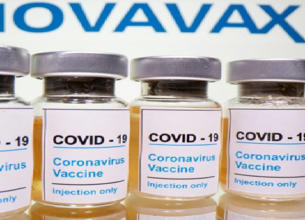COVID-19 NOW A PANDEMIC, SAYS WHO
12, Mar 2020

Prelims level : Medicine and Pharmaceuticals
Mains level : GS-II Issues relating to development and management of Social Sector or Services relating to Health, Education, Human Resources.
Why in News?
- WHO has recently announced COVID-19 as pandemic amidst of increasing outbreak in various countries.
What is COVID-19?
- The COVID-19 is a disease caused by the spread of 2019-nCoV (2019 novel Corona Virus).
- Originating in China, it has spread to other parts of the world which is a cause for concern.
- Coronaviruses are a class of viruses so named because their electron microscope image resembles the corona of the sun.
- They are usually found in animals, but sometimes get transmitted to human beings possibly through the food chain.
- The symptoms can include fever, cough and shortness of breath.
- This happened during the 2003 outbreak of SARS (Severe Acute Respiratory Syndrome) coronavirus that claimed close to 800 lives.
- The current 2019 strain that had originated in China has been named as 2019 ‘novel’ coronavirus (2019-nCoV) or SARS-CoV-2.
What is Pandemic?
- A pandemic is an epidemic of disease that has spread across a large region; for instance multiple continents, or worldwide.
- A widespread endemic disease that is stable in terms of how many people are getting sick from it is not a pandemic.
- The last pandemic reported was the 2009 H1N1 flu pandemic, which killed hundreds of thousands globally.
- According to 2017 pandemic influenza risk management guidelines, the WHO uses pandemic influenza phases, interpandemic, alert, pandemic and transition, to reflect its risk assessment of the global situation regarding each influenza virus with pandemic potential infecting humans.
- Further, flu pandemics generally exclude recurrences of seasonal flu.
- Throughout history, there have been a number of pandemics, such as smallpox and tuberculosis. One of the most devastating pandemics was the Black Death, which killed an estimated 75–200 million people in the 14th century.
- The only current pandemic is HIV/AIDS, which started in the 1980s. Other recent pandemics are the 1918 influenza pandemic (Spanish flu) and the 2009 flu pandemic (H1N1).
What are the different levels of disease?
- According to the Centers for Disease Control and Prevention (CDC), there are different levels of diseases, they are:
- Sporadic:When a disease occurs infrequently and irregularly.
- Endemic:A constant presence and/or usual prevalence of a disease or infection within a geographic area. (Hyper endemic, is a situation in which there are persistent, high levels of disease occurrence.)
- Epidemic:A sudden increase in the number of cases of a disease—more than what’s typically expected for the population in that area.
- Pandemic:An epidemic that has spread over several countries or continents, affecting a large number of people.
Phases of Pandemics:
- The World Health Organization (WHO) provides an influenza pandemic alert system, with a scale ranging from Phase 1 (a low risk of a flu pandemic) to Phase 6 (a full-blown pandemic):
- Phase 1:A virus in animals has caused no known infections in humans.
- Phase 2:An animal flu virus has caused infection in humans.
- Phase 3: Sporadic cases or small clusters of disease occur in humans. Human-to-human transmission, if any, is insufficient to cause community-level outbreaks.
- Phase 4:The risk for a pandemic is greatly increased but not certain.
- Phase 5:Spread of disease between humans is occurring in more than one country of one WHO region.
- Phase 6:Community-level outbreaks are in at least one additional country in a different WHO region from phase 5. A global pandemic is under way.
















